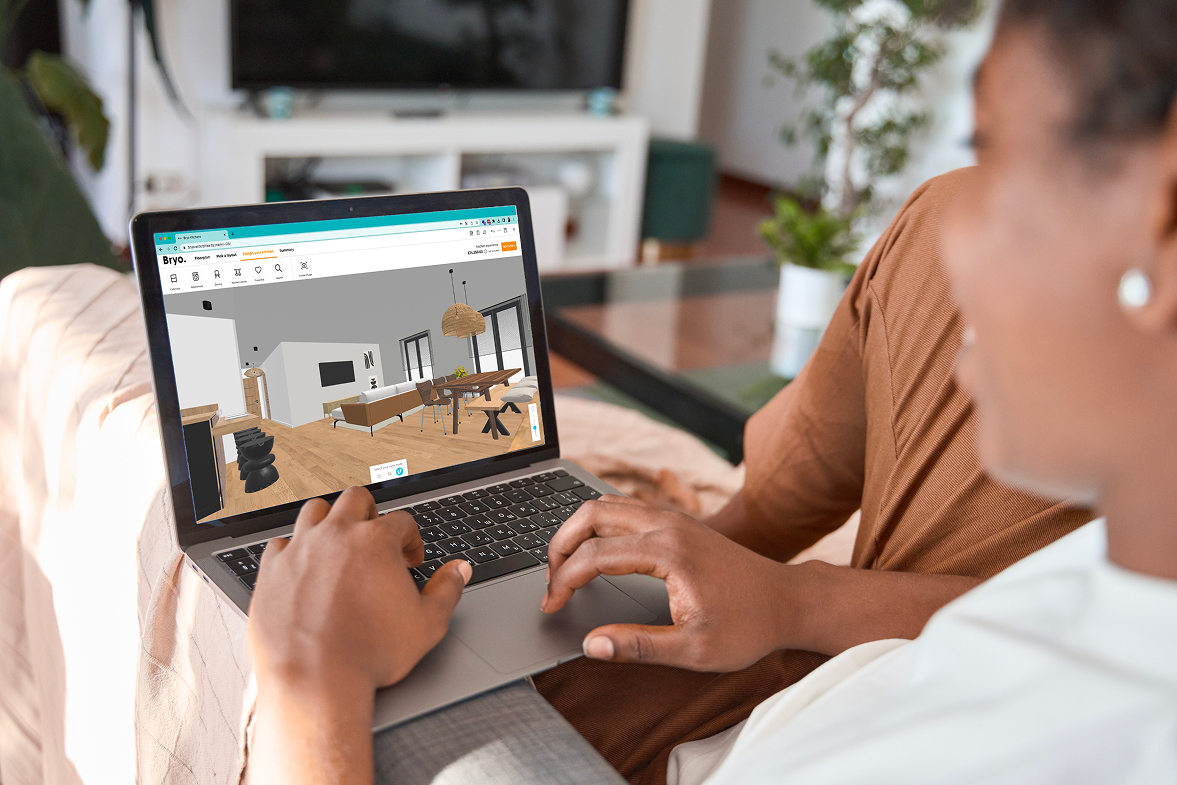Reinvented Customer Journeys: Digital, In-Store, and Hybrid Experiences
The home improvement market, from DIY to furniture, has experienced a significant boom since the pandemic.
Consumers have become more independent, creative, and budget-conscious, with a renewed passion for renovating and personalizing their homes. In response, retailers must adapt and rethink the shopping journey to meet these evolving expectations.
What are these different customer journeys redefining the shopping experience? And how are brands leveraging them to improve commercial efficiency? Let’s dive in.
The Customer Journey: A Strategic Priority for Retailers
In the U.S., 87% of customers begin their research online before making a purchase, whether that ultimately takes place online or in-store. In Europe, over 80% of shoppers use their smartphones to gather information before buying. These figures emphasize the crucial importance of a digital presence. However, physical stores remain vital, especially for major purchases like furniture.
Shopping behaviors have changed, increasingly blurring the lines between channels. Digital and physical experiences are now interconnected, with customers wanting to switch smoothly between them, enjoy interactive and immersive experiences, design their projects on their own, and still access professional guidance.
Retailers must therefore provide consistent, personalized, and omnichannel experiences.
The 100% Online Journey: Digital Immersion, Supported Remotely
In a hyper-connected world where e-commerce continues to grow rapidly, some retailers are betting on a completely digital journey. Here, customers research, design, and purchase their projects without ever setting foot in a store. But what does this mean for retailers trying to meet this demand? They need to create an online experience that is as immersive and reassuring as visiting a showroom.
For example, leading American kitchen distributor Cabinets.com has adapted by using the HomeByMe Kitchen Planner solution. This retailer operates solely online and provides a fully digital service to its customers. They can design their kitchens in 3D with high realism, access pre-made layouts, view real-time prices and products, and get remote design advice.
Results:
- A notable rise in conversion rates
- Faster sales cycles
- A smooth and fulfilling customer experience

The 100% In-Store Journey: Physical Experience Enhanced by Digital
While the pandemic has significantly changed furniture shopping habits, there are still those who prefer the exclusive in-store experience. Feeling, trying out, getting advice, and engaging directly remain crucial for many shoppers. Even so, digital tools continue to play a key role in enhancing the in-person customer experience.
For example, Pino – a German kitchen manufacturer within the Nobilia group – uses HomeByMe to help its French retailers co-create projects in-store with customers. The 3D tool provides real-time visualization of the kitchen, making it easier for customers to visualize and make decisions.
Results:
- Faster decision-making
- Stronger trust between customer and seller
- Differentiation by providing high-quality support
The Hybrid Journey: Seamless Multichannel Engagement
Today, many customers switch between multiple channels before making a purchase. Online research, digital configuration, in-store visits, and point-of-sale transactions: hybrid journeys are becoming common. They combine fully digital stages with physical interactions before leading to a sale. The challenge for retailers? Maintaining consistency across these steps.
Gautier, a furniture manufacturer whose strategy emphasizes web-to-store, brings this approach to life. Customers gather as much information as possible online before visiting the store to finalize their project. Gautier has, in turn, strengthened its omnichannel approach by training its staff to help customers develop their projects. With solutions like Product Configurator or Furniture and Decor Planner, they can effectively meet customer needs.
Brico Dépôt Iberia (Spain) adopts a similar approach. The HomeByMe platform lets customers start their project online, designing at their own pace before visiting the store to continue and receive professional advice. Some even find what they’re looking for in-store and keep working on it at home. They get inspiration from the website and store, compare options at home, finalize their project, and place their order online.
This back-and-forth between channels lets customers take charge of their project while getting the human support they need, which is still crucial. This hybrid method allows:
- Greater customer engagement in their project
- Maximum personalization
- Improved efficiency in the sales phase
Expert follow-up to maintain consistency across digital and physical channels

Toward a High-Value Model
Physical and digital components are undoubtedly intertwined. WM88, a French-based manufacturer under the Weber Industries group, perfectly illustrates this flexibility. It integrated HomeByMe into its sales processes as a solution that could be used by professionals and customers alike.
Rethinking the customer journey allows retailers to:
- Maximize conversions with personalized experiences
- Emphasize the importance of physical stores in the overall customer experience
- Use customer data to enhance offerings
- Differentiate yourself with digital innovation
- Provide a consistent customer experience
Faced with increasingly demanding consumers, retailers in DIY, kitchens, and furniture must provide seamless, immersive, and consistent shopping experiences. Whether fully digital, store-based, or hybrid, these experiences are becoming key performance drivers. HomeByMe helps you meet this challenge with solutions that smoothly integrate into both online and showroom environments, ensuring a 100% omnichannel approach.
